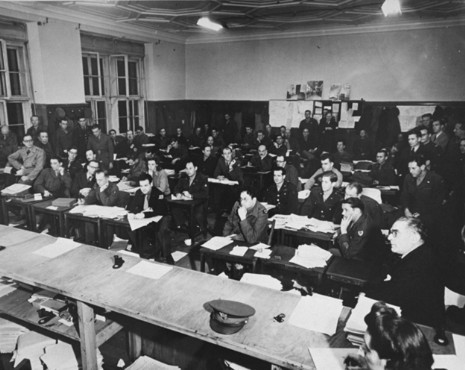
Witnessing History
Those of us who witnessed the Nuremberg trials, as well as those who organized and participated in them, were highly conscious of the fact that history was being made.
—Walter Cronkite, then chief correspondent for United Press
The International Military Tribunal (IMT) at Nuremberg employed hundreds of people. In addition, many journalists and private citizens observed the trial from the visitors' gallery. These men and women realized that they were onlookers at a watershed historical event. Many of the prison guards, some as young as 18 years old, were so impressed by the notoriety of the defendants that they asked for their autographs as a memento of these proceedings.
IMT staff members shared their courtroom entry passes on a rotating basis. Drexel Sprecher, a member of the American prosecution team, recalls that by doing this “[almost] the entire staff could say they had witnessed some part of the beginning of the greatest criminal trial in history.”
Critical Thinking Questions
- Beyond the verdicts, what impact can trials have?
- The International Military Tribunal at Nuremberg is among the best known postwar trials. Investigate trials conducted by other countries after the Holocaust.
- Is it ever too late for accountability?

